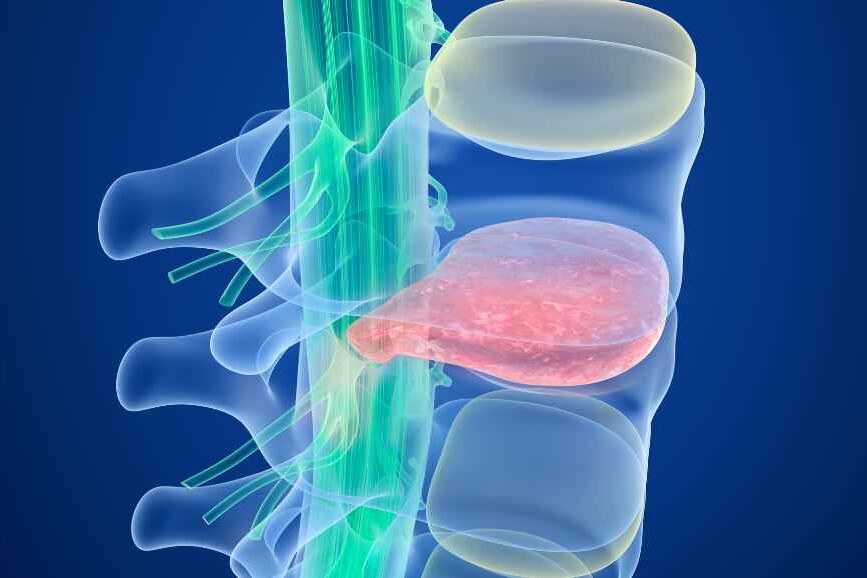Spine surgery, characterized by its complexity and delicacy, demands meticulous planning and precision to achieve successful outcomes. Following the completion of the surgical procedure, an integral component of the recovery process is early mobilization, with a specific emphasis on walking. The timing of initiating walking after spine surgery is a joint inquiry, prompting the need to address concerns about safety and optimal rehabilitation.
This article will delve into the importance of walking as a therapeutic modality after spine surgery. Walking is a pivotal element in the postoperative recovery journey, contributing to several aspects of rehabilitation, including muscle strengthening, joint flexibility, and overall mobility. Understanding when it is deemed safe to commence walking post-surgery is crucial for patients and healthcare providers.
We will explore the benefits of early mobilization, the factors influencing the timeline for walking initiation, and the customized approaches employed by healthcare professionals to ensure a balance between encouraging activity and safeguarding the healing process. By shedding light on the significance of walking after spine surgery, this article aims to provide valuable insights into promoting a smoother and more effective recovery for individuals undergoing these intricate medical procedures.
Early Mobility Benefits
- Data from Journals: Numerous medical journals underscore the importance of early mobility after spine surgery. Early ambulation, or walking, is vital in reducing the risk of complications such as blood clots and respiratory issues.
- Understanding the Importance: Early mobility helps to get the blood flowing, improving circulation and reducing the risk of blood clots. It also aids in preventing respiratory complications by promoting deep breathing and lung expansion.
Post-Op Pain Management
Scientific data and research show that walking can improve postoperative pain management. By promoting circulation and reducing stiffness, walking can help patients manage their pain more effectively.
Understanding the Importance: Pain is a standard part of the post-operative experience, but walking can aid in pain management. Increased circulation can help reduce inflammation and promote the body’s natural healing processes, thus helping to alleviate pain.
Enhancing Recovery
Early walking can contribute to faster recovery and shorter hospital stays for spine surgery patients.
Understanding the Importance: A quicker recovery means patients can return to their daily activities sooner and regain independence. Shorter hospital stays are also associated with reduced healthcare costs.
Table of Contents
ToggleWhen to Start Walking After Spine Surgery?
Surgeon’s Recommendation: Determining the appropriate timing for walking after spine surgery is a nuanced decision influenced by factors such as the nature of the specific surgical procedure and the individual patient’s overall condition. In navigating this aspect of postoperative care, your surgeon emerges as the most authoritative source to offer personalized guidance tailored to your unique circumstances.

Given the intricacies of spine surgery and the diversity of procedures, your surgeon possesses a comprehensive understanding of the intricacies involved in your specific case. They factor in considerations such as the extent of the surgical intervention, the type of spinal condition addressed, and the patient’s overall health status. This individualized approach allows the surgeon to formulate a precise and safe timeline for initiating walking as part of the recovery protocol.
In seeking your surgeon’s recommendation on when to start walking after spine surgery, you are tapping into their expertise and experience. Their guidance ensures a careful balance between promoting early mobilization, which is often integral to the recovery process and safeguarding against potential risks or complications. By heeding your surgeon’s advice, you optimize your postoperative rehabilitation, fostering a collaborative and informed approach to your recovery journey.
- Within 24 Hours: In many cases, patients are encouraged to stand and take a few steps within 24 hours after surgery, even if it’s just a short walk by the bedside. Early walking is essential to prevent complications.
- Gradual Progress: The key is to start slowly and gradually increase your walking distance and time each day. It’s important to follow your surgeon’s recommendations and not push yourself too hard.
Tips for Walking After Spine Surgery
Ask for Assistance: In the early stages of walking, having a nurse or physical therapist assist you is a good idea to ensure your safety. They can provide guidance and support.
Use Mobility Aids: You may be provided with a walker or crutches to aid your walking. These devices can provide stability and reduce strain on your spine, making walking safer and more comfortable.
Maintain Proper Posture
Pay attention to your posture while walking.
Keep your back straight and shoulders relaxed.
Avoid bending at the waist, as this can strain your spine unnecessarily.
Stay Hydrated
Proper hydration is essential for your Recovery. Drink enough water to keep your body functioning optimally, especially if you take medications that can lead to dehydration.
Listen to Your Body
If you experience increased pain or discomfort while walking, it’s essential to stop and rest. Walking should not cause excessive pain. Your body will need time to adjust, and paying attention to your limits is crucial.
Gradual Progress
Don’t rush the process. Gradually increase your walking distance and time as you become more comfortable and robust. The goal is to improve and progress steadily.
Follow-up
Continue to have regular follow-up appointments with your surgeon to monitor your progress and make any necessary adjustments to your activity level. Maintaining clear and open lines of communication with your healthcare team is crucial.
Conclusion
Walking after spine surgery is not merely considered safe; it is actively encouraged as a cornerstone of recovery. Early mobilization through walking provides a spectrum of advantages that contribute significantly to a smoother rehabilitation trajectory. One of the key benefits is enhanced pain management—gentle, controlled walking helps alleviate stiffness, promotes blood circulation, and aids in minimizing discomfort associated with the surgical procedure.
Furthermore, the positive impact on recovery speed cannot be overstated. Early mobility, including walking, accelerates the body’s healing processes, preventing complications related to prolonged bed rest, such as muscle atrophy and joint stiffness. Walking is a natural means to maintain joint flexibility, strengthen supporting muscles, and gradually rebuild overall physical endurance.
Beyond these physical benefits, walking is crucial in preventing post-operative complications. It helps reduce the risk of issues such as blood clots and respiratory complications, contributing to the overall safety and success of the surgical intervention.
While the merits of walking after spine surgery are evident, it is imperative to approach it cautiously and adhere to your surgeon’s recommendations. Taking it slow, particularly in the initial stages of your Recovery, ensures a measured and controlled progression. Your surgeon’s guidance is tailored to your specific case, considering the intricacies of the surgery performed and your health profile. By embracing a cautious and informed approach to walking during Recovery, you optimize your postoperative experience and promote a more robust return to normal activities.
By listening to your body, adhering to the guidance, and understanding the importance of early walking, you can make the most of your recovery process and support your journey to a healthier, more mobile spine.
About The Author

This article is medically reviewed by Dr. Chandril Chugh, Board-Certified Neurologist, providing expert insights and reliable health information.
Dr. Chandril Chugh is a U.S.-trained neurologist with over a decade of experience. Known for his compassionate care, he specializes in treating neurological conditions such as migraines, epilepsy, and Parkinson’s disease. Dr. Chugh is highly regarded for his patient-centered approach and dedication to providing personalized care.
→ Book a consultation to discover which remedies suit your needs best.




